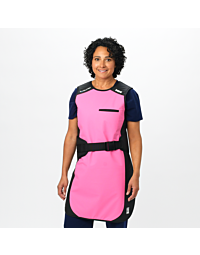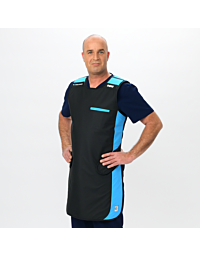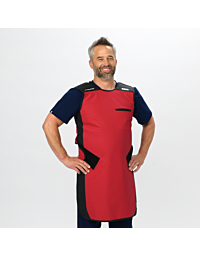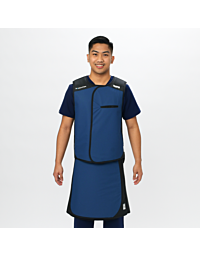FAQ for Lead Aprons
Protective garments are created to shield the body from the hazardous results of ionizing radiation during medical imaging procedures.
Do you need a lead apron with digital x-ray?
The answer is Yes! Radiation is produced with both analog and digital x-ray systems. It is recommended that everyone who works in and around radiation use radiation protective garments to shield from scatter radiation. Patients, on the other hand, typically don’t need lead protection if newer equipment is being used. Radiation beam strength has been reduced by 90% since the 1970s and the risk of damaging effects is negligible according to scientific research.
Does Lead protect against radiation?
Lead acts as a barrier from radiation as a result of its high molecular thickness. Other lead-free minerals such as Tungsten, Antimony, and Bismuth also provide a great barrier of protection from scatter radiation.
How effective are lead aprons in protection?
Lead aprons can be one of the most effective personal radiation protective devices available to technologists. Lead or Lead-Free protective garments should be worn by every employee within six feet of the primary beam in a fluoroscopy room. Studies show that lead aprons may lower the dose received by over 90%, depending on the thickness and composition of the apron.
Are lead free aprons safe?
Yes! The FDA would not allow manufactures to use lead-free minerals if they didn’t provide the same Pb equivalency. The non-lead or lead-free aprons are recyclable and also safe for non-hazardous disposal
How heavy is a lead-free apron compared to traditional lead aprons?
Non-Lead aprons can be as much as 40% lighter than the common older lead aprons. A large Lead-Free front protection apron typically weighs about seven pounds making it the apron of choice for longer procedures or days where you find yourself having to wear radiation protective garments all day at work.
Do lead and lead-free aprons stop radiation?
Both Lead and lead-free aprons minimize the radiation dose to the body from a range of diagnostic x-ray procedures and have similar .5mm Pb equivalencies.
How long do lead aprons last?
Lead aprons, vest & skirts, thyroid shields and gloves need to be properly kept when not in use and checked every 6 months to a year for cracks, creases, or tears to validate the integrity of the garment or item. If a garment is worn every day all day in a busy emergency room and not taken care of or hung on the apron rack when not in use, it may last just 6 months compared to an apron that hangs on a hanger behind the door of a doctor’s office, and worn perhaps once a month and properly stored when not in use. That garment could last for many many years. So the integrity of the garment is based upon how often it is used and how it is stored when not in use.






